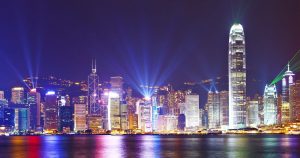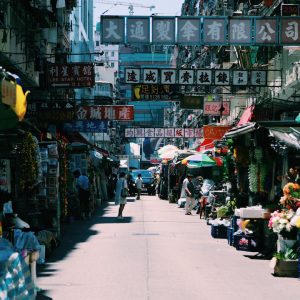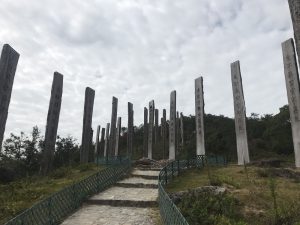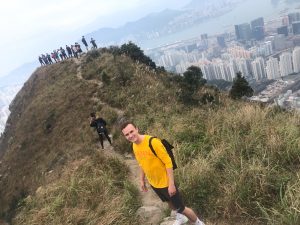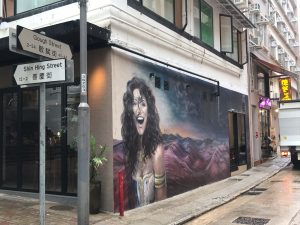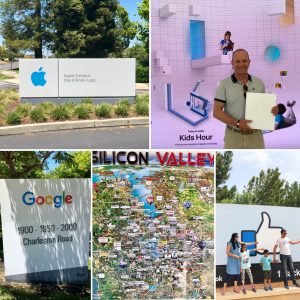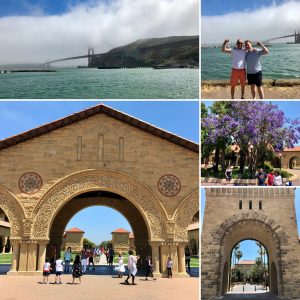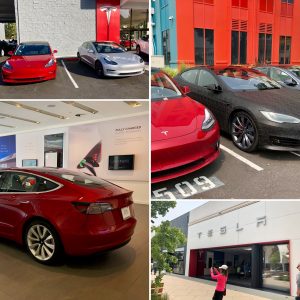 27.03.2023
27.03.2023
Better Monday® Podcast
The Better Monday podcast is live today on Apple podcasts and Spotify. Welcome to listen Timo’s thoughts about impact investing, work culture and the importance of empathy in a business context.
Many thanks to Milla Heikkilä and Sofokus for the interview. Lisää >Home of the freest economy in the world
Mikael Ketonen
In early January I parted ways with a cold and slushy Helsinki scenery to embark upon a completely new experience in one of the most prominent and growing business metropolises in the world, namely Hong Kong. This is a city most well-known for its dense population, iconic neon lights and a skyline so filled with skyscrapers that only a handful of cities in the world can compete with. While the most obvious shock might have been the increase in population density from 16 people per square kilometre to nearly 7,000 people per square kilometre, Hong Kong is much more than just a densely populated city. It is the home of one of the strangest capitalist political systems in the world that markets itself as the freest economy in the world. It is a city that boasts the densest population of millionaires in areas such as Central and Admiralty, where every other piece of clothing you see reads either Balenciaga, Gucci or something of sorts. Meanwhile, just a 15-minute train ride away, areas like Sham Shui Po are cluttered with people selling fake electronics, clothing or collecting and selling cardboard off the streets just in order to make enough money to survive. It is a city that loves to display its luxurious lifestyle and money-centred culture while a large proportion of its citizens lie well below the poverty line. A division like this is by no means abnormal, but the reasons behind it make Hong Kong the most peculiar well-fare society in the world and raises enormous wonders regarding its future.
Symphony of Lights on Hong Kong Island, view from Kowloon
Sham Shui Po, Kowloon
Due to its complicated history, which includes an over 150-year period under British rule, the people of Hong Kong often have difficulties with recognizing their own identity and nationality. The British rule ended in 1997, with an oral agreement between the British and China which essentially entails that the current political system and the freedom of the people will remain unchanged for 50 years while Hong Kong adapts to the imminent reunion with China. In principle, the people are being forced to become Chinese, with whom they don’t even share a language, as the local Cantonese is very different from the Mandarin language spoken in mainland China. The opinions regarding this reunion are drastically split, as certain people see the threat of their personal and political freedom being reduced while others feel a stronger bond to mainland China. The consensus though, seems to be a general fear of the influence of the Chinese government and an unwillingness to identify as a Chinese citizen rather than a Hong Kong resident.
Wisdom Path near Big Buddha statue
Kowloon Peak
Economically speaking, the difference between the two nations is huge. Hong Kong boasts a system of minimal taxes, which makes it a paradise for corporate headquarters and wealthy individuals in general. To compensate for the revenue lost by minimal taxes, the government of Hong Kong has introduced a system where all the land belongs to the government. The land is then leased to real estate firms in an auction process, where prices usually surge to skyscraper-like heights. This lease is then incorporated into the price of an apartment or the rent, which explains why a one bedroom apartment in the city has an average rent of HK$ 18 000 (about 2050 €) a month. The obvious explanation for an inflated housing market like this is a lack of space, but in fact about 70 % of the land in Hong Kong is not being used and only 3,5 % of the land is zoned for housing. Thus, the prices are effectively deliberately being driven up, officially making Hong Kong the least affordable city in the world, by a landslide. According to The 15th Annual Demographia International Housing Affordability Survey (2019), the median property price is almost 21 times the median household income in Hong Kong. This means that most households can never even dream of owning an apartment in Hong Kong. Meanwhile, at one of the exclusive Golf Clubs on the Island side, the wealthy pay north of 35 million $HK for a membership. That is over 4 million €! It is an utterly strange setup, where a city has decided to go all out to ensure a free market and a fully-functional capitalist system, while simultaneously creating an impossible housing situation for the less wealthy. It is like the city has been designed to serve the rich in every way possible, but doesn’t know what to do with you if you are not.
Sheung Wan, Hong Kong Island
While the situation is indeed difficult and most of the blame is being shifted to the northern neighbour of Hong Kong, there is still a lot of hope and aspiration among the people. While the system is utterly divided, it still provides everyone with a chance to succeed, albeit facing enormous competition. When being accepted to one of the many universities in Hong Kong, students can live at university dorms for very reasonable prices, even on a Finnish scale. What needs to be emphasized is that the amount of money in Hong Kong is on another level compared to European cities and a common mind-set is that within this money lies the power to make improvements. ESG-factors (Environmental, Social & Governance) are becoming extremely important in corporations and among wealth managers in the city. While this will not solve the outrageous housing market, it still shows the willingness of the city and its residents to do their part and encourage sustainable investing and impactful behaviour in general.
Less wealthy individuals use the power of freedom of speech to constantly show their dissatisfaction towards the inefficient land management in Hong Kong. Other entrepreneurial minds are creating capsule-like homes of cheap materials to make the small apartments that people share more accommodating. While this is merely a band-aid type of solution, it shows that the people are effectively trying their best to find a solution to this one disastrous aspect of an otherwise exhilaratingly diverse and beautiful city. It is very difficult for a foreigner in the city to understand the very basis of this housing problem, as it is hidden away from the central areas and one really needs to search hard in order to see how scarce the availability of cheap living is in this self-proclaimed freest economy in the world.
Lisää >Highlights from Silicon Valley
At the end of June we had the opportunity to take the direct Finnair flight to San Francisco for a week in Silicon Valley. My wife and I rented a small studio in Palo Alto via Airbnb and had the flat as our home base for visits in the region. The purpose of the trip was both business and pleasure, as the campus visits were part of the plan as well as meetings with clear objectives for some of the startups in our portfolio.
Apple Park
A true highlight of the trip was the Apple Park visit at One Infinite Loop in Cupertino on Friday 27th June. What we experienced was a real showcase of Art and Design. Apple’s iconic designer Jony Ive has always been my idol. Design is not just about the user friendly products; it’s the immaculate finish of manufacture and the magical user experience including the Apple stores. I actually bought the photo book of product design at Apple campus: Designed by Apple in California, one to enjoy while glancing through photographs and sketches of the most iconic products like the first iPhone. The iPhone is the one device that changed the way we communicate, create and live. While designing the iPhone many existing technologies were utilised, however, Apple was the company that patented the multitouch technology and gave us the magical user experience of a smartphone now loved by many of us. And Joy, our contact person was a perfect example of the friendly Apple people with true passion for the products. Pitched the idea and need for iOS development for one of our portfolio companies and Apple’s business expert followed-up on this in the following week. And now I’m reading Jony’s book once again.
“Different and new is relatively easy.
Doing something that’s genuinely better is very hard.” —Jony Ive
On a general note the Silicon Valley tour and campus spotting was well worth the time spent. We also visited the Facebook campus at Menlo Park and Google at Mountain View, as well as Tesla in Palo Alto.
San Francisco
During the weekend we visited San Francisco on a guided tour by Toni Perämäki, an old friend and COO of Valohai, a machine learning and AI startup from Finland. We had good discussions regarding the business opportunities and culture in Silicon Valley. California is clearly a place for creative people and for me it’s not at all like the other places in the US I’ve visited over the years. People have different values, the atmosphere is quite international and there is a clear trend for healthy food and lifestyle. The day included a trip over the Golden Gate bridge to Sausalito, a charming seaside town.
The weekend was complete with a tour of the Stanford University campus, amazing in terms of architecture and knowledge. A day of pondering and walking around this beautiful campus where ”the wind of freedom blows”. I wish I could return here some day to finish off my PhD.
Networking and new ideas
Networking, new ideas and connections are among the most valuable takeaways of this trip. The first few days of July included a visit at the Nordic Innovation House in Palo Alto, where I met with Hartti Suomela and Tan Thuong, Senior Advisors at Business Finland. They are helping Finnish and Nordic companies to get started in Silicon Valley and our discussions focused on healthy food trends, retail and how to find the right local partners. I’m very glad that they agreed to have Plantui Smart Garden samples at the showroom. This has already been set up by the kind initiative of Katja Kotala, Community Manager at the Nordic Innovation House. As a next step we’re actively looking for a local distribution partner for Plantui in CA.
A friend and former colleague Niklas Kiviluoto introduced me to Jon Snydal, who is the Design Director at the Cogniance design studio in San Francisco. Cogniance is design led technology consultancy: “We build impactful futures through design-led technology”. They have 500+ team members including 50 designers at their offices in Kiev, Ukraine and Poland, as well as a design studio in Munich. Among the topics discussed were holistic digital in-car experience, car dealership experience and driving aids for self-learning vehicles. As a small token of gratitude Jon also received the newly launched Haikara Watch designed by Harri Koskinen, which he seemed to appreciate. Here are a number of opportunities from a service design point of view including app development.
Last but not least – cars & music go together: like the hit song from my exchange student days in the 80’s “Drive” by The Cars and “Racing in the streets” by Bruce Springsteen. In CA there’s a Tesla on every corner including lots of new Model 3s. Let’s just hope Tesla can pick up its production and deliveries so we can soon have Model 3’s in Finland too.
Hope you enjoyed this short travel blog, written at the cottage in the archipelago in SW Finland. Best summer wishes to everyone!
Timo
